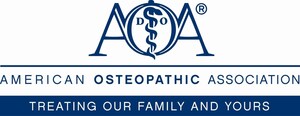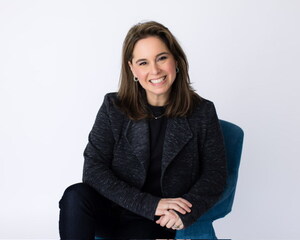Osteopathic Physicians Vote on Policies to Support Advancement of Residency Programs
CHICAGO, July 21, 2012 /PRNewswire-USNewswire/ -- With the threat of a physician workforce shortage in mind, members of the American Osteopathic Association's (AOA) House of Delegates approved three policies today to strengthen and protect osteopathic medical residency programs and make the burden of medical school loans less cumbersome for physicians in training.
"Maintaining access to residency positions for our osteopathic medical school graduates is a top priority for the AOA," said Michael I. Opipari, DO, chair of the AOA Council on Postdoctoral Training. "At the same time we recognize that the repayment of medical school loans during residency can be an overwhelming burden on the incomes of medical residents."
Ambulatory Care Primary Care Residency Programs
The Primary Care Workforce Access Improvement Act of 2011 (HR 3667) provides for funding to develop a model for ambulatory-care medicine residencies. The osteopathic medical profession has a long history of practicing in this type of medical setting, which is also referred to as outpatient care.
The new AOA policy calls on the association to support and advocate for the development and implementation of ambulatory-based primary care residencies and lobby the United States Congress to strengthen its graduate medical education reimbursement policies to equivalently fund ambulatory-based primary care residency programs.
Loan Deferment During Residency
The median debt amount for graduates of public medical schools is $155,000 and $180,000 for private medical schools. In July 2009, it became a requirement that to qualify for loan deferment a resident's monthly debt must total at least 20% of that person's monthly income, and that the individual's total income not including the loan debt cannot be more than 150% of the federal poverty level, which was a dramatic decrease from the previous 220%. This rule disqualified 67% of all incoming resident physicians who would have otherwise qualified under the "20/220 pathway" system. Under the new rules, interest payments on medical school loans, which can make up a significant portion of a resident's wages, would still have to be made during periods of forbearance.
Payment of the high amount of debt accrued during medical school has become a significant burden on medical residents which may increase burnout rates and cause many to rethink careers in medicine. For this reason, the AOA policy calls for support of legislation that would allow resident physicians to defer the repayment of their federal medical school loans interest free until the completion of their residency training.
New Methods of Residency Funding
As possible government cuts continue to threaten graduate medical education funding, it will create a shortage of AOA residency spots to accommodate osteopathic medical school graduates. These residency positions require substantial funding not readily available and separate government funding.
AOA policy calls for the study, development and promotion of new methods of receiving additional funding.
About the House of Delegates
The AOA's House of Delegates, comprised of more than 500 delegates representing osteopathic state medical associations, specialty societies, interns, residents and students from throughout the country, meets annually in July to set organizational policies and elect new officers.
About the American Osteopathic Association
The American Osteopathic Association (AOA) proudly represents its professional family of more than 100,000 osteopathic physicians (DOs) and osteopathic medical students; promotes public health; encourages scientific research; serves as the primary certifying body for DOs; is the accrediting agency for osteopathic medical schools; and has federal authority to accredit hospitals and other health care facilities. More information on DOs/osteopathic medicine can be found at www.osteopathic.org.
SOURCE American Osteopathic Association
WANT YOUR COMPANY'S NEWS FEATURED ON PRNEWSWIRE.COM?
Newsrooms &
Influencers
Digital Media
Outlets
Journalists
Opted In






Share this article